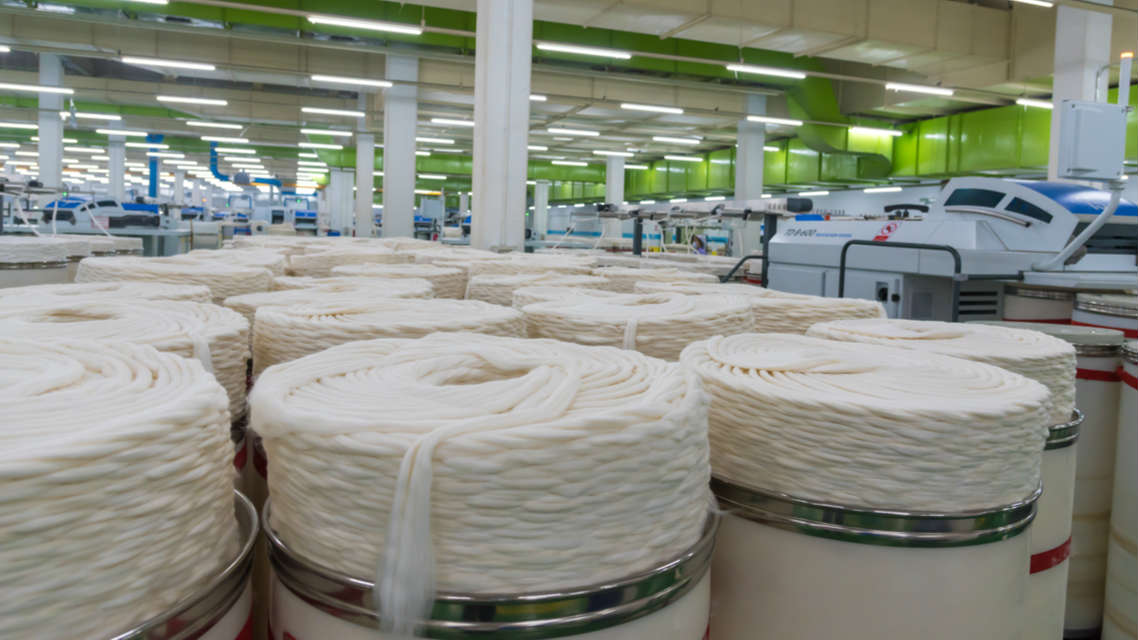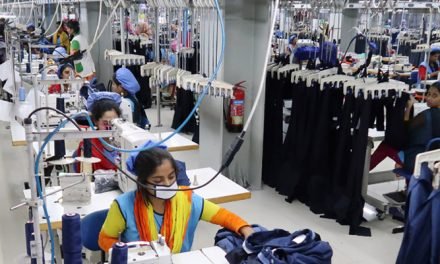 Even as the ongoing turmoil in Bangladesh has left the yarn exporters from Punjab and other parts of the country worried over their stuck consignments and payments, the textile industry is eyeing an opportunity. Exporters believe that due to the crisis, global textile orders could shift partly to India.
Even as the ongoing turmoil in Bangladesh has left the yarn exporters from Punjab and other parts of the country worried over their stuck consignments and payments, the textile industry is eyeing an opportunity. Exporters believe that due to the crisis, global textile orders could shift partly to India.
In a month, India exports around 40,000 tonnes of different type of yarns, including cotton, acrylic and woollen, to Bangladesh. Punjab’s share in the exports is around 35 per cent.
According to yarn makers, the state has huge stakes in Bangladesh as the net exports generate over Rs 4,000 crore each year. The largest share is of cotton yarn, followed by acrylic wool. As the border with Bangladesh has been shut, the export consignments are stuck.
“Goods worth more than Rs 200 cr are stuck at the border and orders worth Rs 1,000 crore will be immediately effected,” said Amit Thapar, President, Ganga Acrowools Ltd, who also heads Northern Region-CII export committee. His own goods (woollen yarns), worth Rs 2 cr were stuck and orders worth Rs 4 cr would be impacted if the situation did not improve, he added.
Sanjiv Dutt, vice-president of Punjab-based Winsome Textiles, said the crisis in Bangladesh would have a severe impact on the industry in Punjab, as payments would be halted or delayed. “High-quality cotton had been imported before the crisis. The payment circle will be hit as Bangladesh is a crucial market for Indian textiles,” he added.
Bajrang Lal Sharma, member of the management committee of All-India Motor Transport Congress, said: “More than 700 trucks laden with yarn, chemical fabric and cycle parts are stranded on the Indian side of the border, while 1,300 trucks are stuck on the other side. Of these, roughly 200 are were of Punjab-based exporters.”
Meanwhile, stakeholders of the garment industry anticipate that due to the crisis, global buyers may shift short-term orders to India, benefitting the garment clusters in Ludhiana, Noida, Tiruppur and Gurugram. They also hope that Indian corporate houses like Reliance, Tata, Madura Coats, Arvind and brands like Marks and Spencer, Canterbury, Polo, etc., who were earlier getting outsourcing done from Bangladesh, can come up with orders for the local industry.
Talking to The Tribune, Sudershan Jain of Oner Knitwear said: “India now has a good opportunity to make a comeback. If governments support the garment industry, this could be a golden opportunity for manufacturers to get orders in bulk. Countries like China, Cambodia and Vietnam are also in the race, but India too can catch up,” said Jain.
“Some of our members have already received queries from foreign buyers. As India exported a significant amount of yarns and fabric to Bangladesh, if everything goes well, you might see a lot of export orders being catered from India in the near future,” said Lalit Thukral, president, Noida Apparel Exporters Cluster. Thukral is also the regional head, northern region, for Apparel Export Promotion Council. As per estimates, there are approximately 10,000 garment/textile units in Ludhiana, half of which are associated with the corporate sector in one way or the other.
Currently, of $44 billion earned due to textile exports from India, $14 billion is generated by exports in the apparel segment alone. Bangladesh earns $47 billion in a year from apparel exports.





















